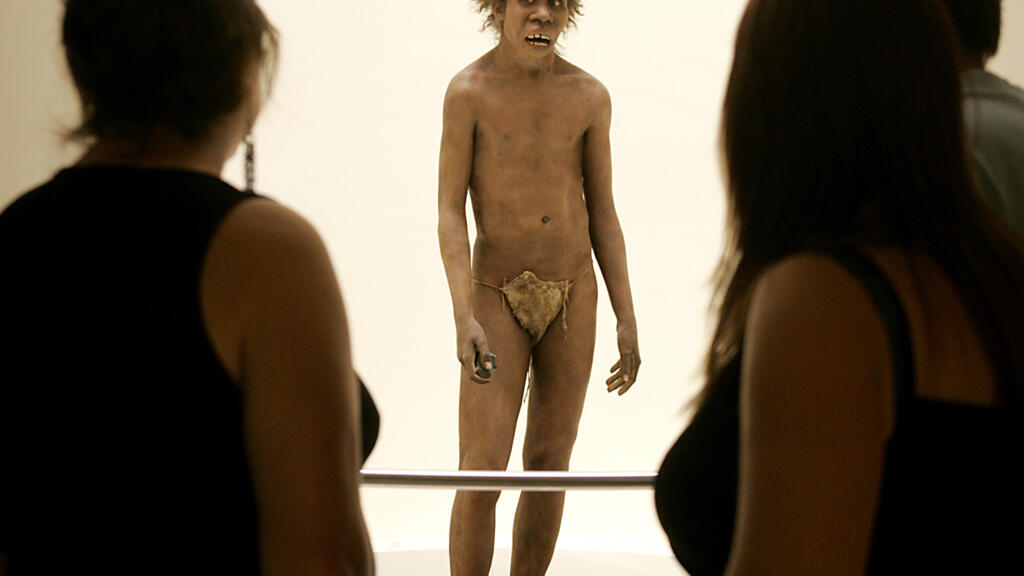First modification:
Paris (AFP) – A genetic study published on Wednesday outlines the contours of a “social organization” of the same family of Neanderthals who lived more than 50,000 years ago in a cave in Siberia (Russia).
The sequencing in 2010 of the genome of Neanderthal man by the Swede Svante Pääbo, recently awarded the Nobel Prize in Medicine, made it possible to roughly trace the history of this extinct line that populated western Eurasia between 430,000 and 40,000 years ago.
Thanks to archaeological excavations, it is known that some Neanderthals buried their dead, made elaborate tools and even ornaments, far from the image of primitive brutes that accompanied them for a long time.
But little is known about their social structure. The genetic sequencing of an entire group of individuals, the largest ever carried out on these hominids, provides some elements.
The story takes place in southern Siberia, in Russia, a particularly fruitful region for the search for ancient DNA, since the cold helps preserve this fragile and precious index of the past.
The genome of Denisova man -another extinct human race- was discovered there, in the cave that bears the same name, recalls a statement from the Max Planck Institute for Evolutionary Anthropology in Leipzig (Germany), where the work published in Nature magazine.
About a hundred kilometers away are the Chagyrskaya and Okladnikov caves, occupied by Neanderthals about 54,000 years ago.
Numerous traces had already been recovered there in a single layer of deposits, indicating that the occupants had lived during roughly the same period.
To verify this, the DNA had to be made to speak, a task all the more delicate since it was not about entire skeletons, but about teeth and scattered bone fragments.
“First we had to identify how many individuals we had,” explained paleontologist Stéphane Peyrégne, one of the main authors of the study.
His team used new techniques to isolate ancient human DNA – often drowned in microbial contamination – and capture it.
It was confirmed that the remains came from 13 Neanderthals (7 men and 6 women, including 5 children or adolescents), 11 of them were found in the Chagyrskaya cave.
Important consanguinity
In their mitochondrial DNA -transmitted by the mother- the researchers found the same genetic variant, heteroplasmy, which persists only in a few generations.
The genes also revealed close kinship ties: a father and his teenage daughter, a boy, and an adult woman who would have been his cousin, aunt or grandmother.
Direct evidence that these people belonged to the same family and lived at the same time.
Thanks to genetics, “we produced a concrete picture of what a Neanderthal community might have been like,” says Benjamin Peter, who supervised the research with Svante Pääbo.
The group in question, genetically close to the Neanderthals of western Europe, did not mix with other species – sapiens and Denisovans – as other Neanderthals did in other times.
Their genetic diversity is also very low, a sign of significant consanguinity and life in a small group of between 10 and 20 individuals, much less than in the ancient communities of Homo sapiens.
“It is probably a very subdivided population”, but one that did not live completely isolated, explains Stéphane Peyrégne.
The women would have tended to migrate from community to community to procreate, leaving the men in their clan of origin.
This “patrilocal” functioning, which also prevailed in Sapiens, is suggested due to a much weaker genetic diversity of the Y chromosomes (transmitted by the male line) than that of the mitochondrial DNA, transmitted only by the mother.
Such an organization had already been advanced after the discovery of fossils from the El Sidrón cave in Spain, but based on less complete genetic material, notes paleoanthrologist Antoine Balzeau, who was not involved in the study.
“It is a very interesting technical feat for our research, although it will have to be compared with other groups,” replied this researcher at the National Museum of Natural History.







![[Img #74664]](https://thelatestnews.world/wp-content/uploads/2024/12/James-Watson-The-controversial-genius-behind-the-double-helix-150x150.jpg)





